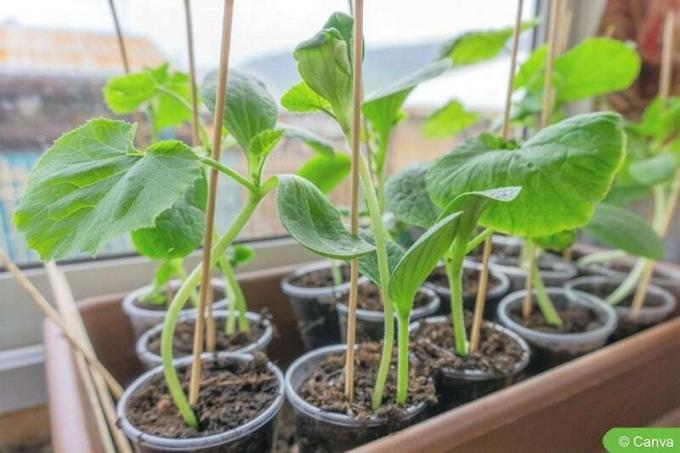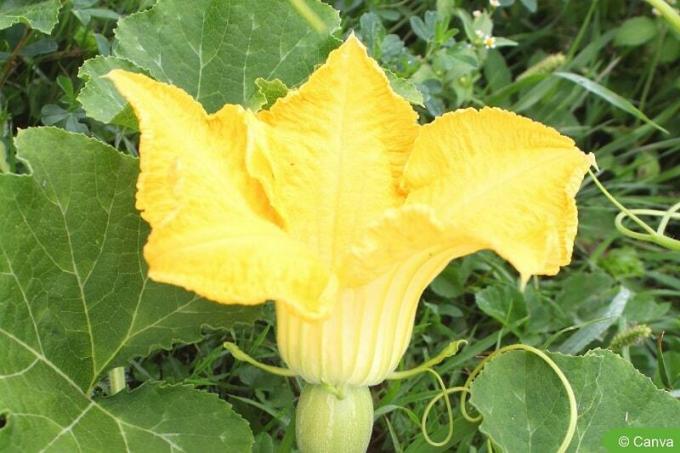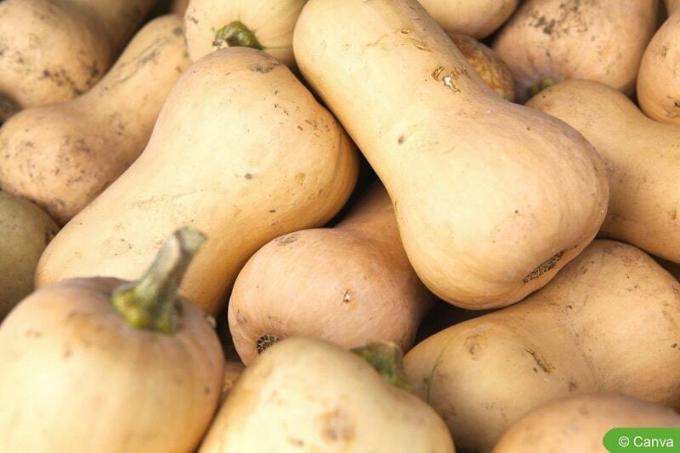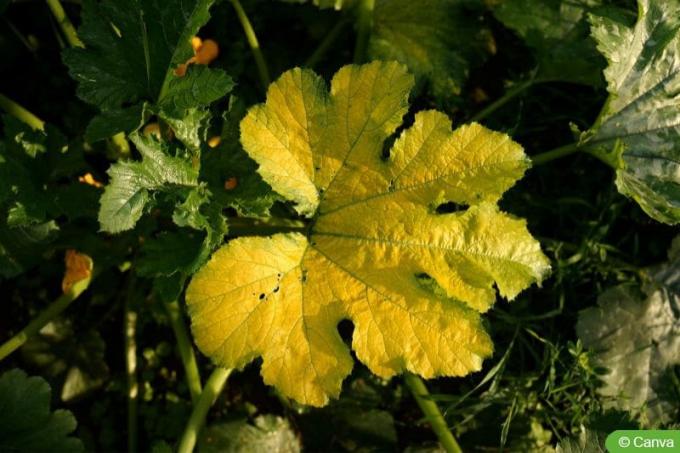

Table of contents
- Butternut Squash
- harvest time
- maturity characteristics
- Harvest butternut squash
- To store
- let ripen
- frequently asked Questions
Rich yellow flesh and a pear-like shape characterize the butternut squash. If you have enough space for the fast-growing plants, you will be rewarded with many tasty fruits. When is the butternut squash ready for harvest?
Butternut Squash
Its popularity has Butternut Squash (Cucurbita moschata 'Butternut') thanks to its tasty pulp, which almost completely fills the fruit. Unlike other types of pumpkin, it has a very thin skin. Ripe fruit only have the full flavor and have a pleasant consistency.

harvest time
Butternut squash are not ready to harvest until the end of September, a few weeks later than most other varieties. It is important that the fruits are harvested before the first frost.
maturity characteristics
You can recognize a butternut squash ready for harvest by these characteristics:
- standard size
- Pumpkin feels solid and heavy
- uniformly colored, stripeless, beige skin
- woody brown stem
- dull knocking sound

Tip:
Pre-plant your pumpkin plants on the window sill. In this way, strong plants can develop whose fruits have enough time to ripen.
Harvest butternut squash
To harvest the squash, cut it off the plant with a sharp knife. Leave a piece of the woody stalk on the fruit to increase its shelf life.
To store
Under favorable conditions, butternut squash can be stored for several months. Storage at around 15 degrees is ideal. You can then enjoy healthy pumpkin dishes until spring.

Tip:
Not only the pulp, but also the blossom of the butternut squash is a delicacy. It tastes good roasted or fried and can even be used fresh in a salad.
let ripen
Butternut squash that are planted late do not always ripen before the first frost. It may also be the case that early frosts force unripe fruit to be harvested.
Ripening is possible when the pumpkins have reached a minimum level of ripeness.
Instructions
- Cut the fruit off with a sharp knife, leaving a piece of the stalk attached to the fruit.
- Place pumpkins on a sand or straw surface to ripen.
- Store the fruit at a room temperature of around 15 degrees Celsius. Rooms with low humidity are recommended.
- Ventilate regularly.
- Turn the squashes occasionally to prevent bruising.

A notice:
Sort out rotten fruit. They could infect other pumpkins.
frequently asked Questions
Pumpkins that taste bitter must be discarded immediately. They are not suitable for consumption. Pumpkin plants, which also include zucchini and cucumbers, can develop bitter substances that are dangerous for humans. Vomiting, diarrhea or abdominal cramps are typical symptoms of cucurbitacin poisoning. Deaths are also known.
The bright spot is where the pumpkin lay on the ground. It is not a sign of immaturity.
A ripe butternut squash is about 8 to 12 inches long. Depending on the variety, this length can also be exceeded. For example, squash plants grown in a sunny location in rich soil and given adequate watering will often produce larger fruit.
A perfect bed partnership is formed by pumpkins with corn and runner beans. The vegetables are also known as the "three sisters". All three benefit from the shading of the ground by the large pumpkin leaves. The nitrogen produced by the beans, on the other hand, strengthens squash and corn, while beans can use the corn plants as climbing aids.
 Mirko
Mirko
Learn more about pumpkins

Zucchini fruits rot on the plant: what to do?
Sometimes a young zucchini fruit suddenly stops growing. At the same time it becomes yellow and rotten from the top. Read here how you can save your harvest if the fruits of your zucchini are rotting on the plant.

Yellow leaves on zucchini: what to do?
Zucchini planted in the garden usually develop so luxuriantly that there is often a veritable glut of zucchini. However, if the zucchini gets yellow leaves, you should consider location, care and diseases as causes and act immediately.

Zucchini: remove male flowers?
Zucchini form female and male flowers on one plant. The male flowers are important for pollination and thus fruit formation. The question often arises as to what the advantages and disadvantages are after removing the flowers.

15 good neighbors of pumpkin | mixed culture
The cultivation of pumpkins is effectively supported by the right mixed culture. Good neighbors protect against pests, can be used as a natural climbing aid and optimize the nutrient balance in the bed. Pumpkins can be cultivated much more successfully this way.

Grow your own luffa cucumber 9 tips for the sponge gourd
Although the luffa cucumber comes from the tropics, it can also be grown locally. However, the sponge gourd is dependent on certain conditions when it comes to location and care, with these tips you will have a rich harvest.

How to Freeze Pumpkin | 4 tips so that it does not become bitter
Pumpkin season begins in the fall. If you want to enjoy pumpkin beyond that, you can freeze it for a longer shelf life. So that it doesn't taste bitter after defrosting, you need to pay attention to a few details that are explained in the guide.


